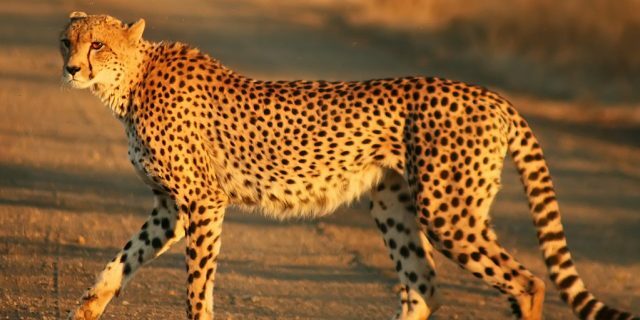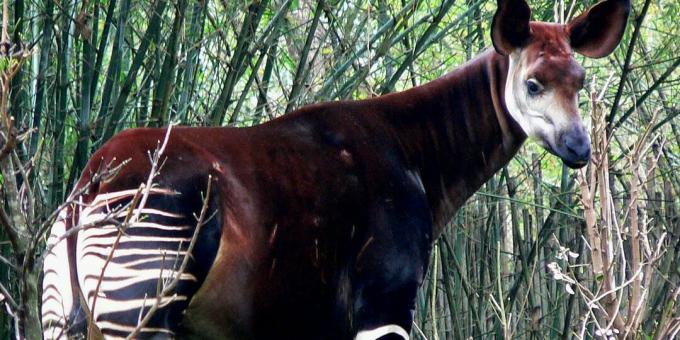Cryptozoology: who and why is looking for the Loch Ness monster and other mythical animals
Miscellaneous / / August 26, 2021
Alas, it is unlikely that the Yeti or Nessie exist.
What is cryptozoology and who does it
Cryptozoology is a branch of knowledge that deals with the search and study of animals, the existence of which is controversial or not proven by science. Such animals are called cryptids. There is also cryptobotany and cryptobiology, combining the search for fictional plants and animals together.
One of the first representatives of cryptozoology was the Franco-Belgian zoologist Bernard Eyvelmans, who wrote the book "In the footsteps of unknown animals" in 1955. Today, enthusiasts without a biological education classify themselves as this discipline. Among them are opponents of the theory of evolution, creationists, supporters of the existence of paranormal phenomena, newagers and those who simply play on the interest of the mass public to everything mysterious.
Who are considered cryptids
This is what they callThe Science Behind Bigfoot and Other Monsters / National Geographic any hypothetical animals that are not described by science. Here are the most famous ones:
- The Loch Ness Monster (Nessie) is a huge long-necked waterfowl allegedly living in the Scottish Loch Ness. According to one hypothesis, it is not clear how the surviving dinosaur (plesiosaur) is.
- Other river and lake monsters like Nessie: Mokele-mbembe from Nigeria, American monsters Champlain and George.
- Yeti - they are also called Bigfoot, Bigfoot, Sasquatch, Alamas - huge upright primates. According to the most plausible hypothesis, they are descendants of gigantopithecusY. Zhang, T. Harrison. Gigantopithecus blacki: a giant ape from the Pleistocene of Asia revisited / American Journal of Physical Anthropology - a huge monkey that became extinct 100 thousand years ago.
- The Chupacabra is a creature described as an upright bipedal monster or a dog-like animal. He is accused of killing livestock and sucking blood.
- Pterosaurs are flying dinosaurs supposedly preserved in Africa.
- Phantom cats are large cats like pumas that inhabit uncharacteristic habitats for them, namely the British Isles.
- Mermaids, dragons, giant snakes and other creatures from myths, legends and urban legends.
Animals that have become extinct can also be considered cryptids. For example, these include the Tasmanian wolf (thylacin) or the sea cow.
Also, animals with rare genetic mutations can be written into cryptids. For example, royal cheetahsThe Elvis of Cheetahs / African Wildlife Foundation, which were nicknamed so for their unusual color - large black spots and stripes on the back, uncharacteristic for the species.

Royal cheetah. Photo: Olga Ernst / Wikimedia Commons

A common cheetah. Photo: Mukul2u / Wikimedia Commons
Why the scientific community does not recognize this discipline
Scientists have many complaints about cryptozoology.
There is no clear evidence for the existence of cryptids
In biology, there have been cases where the existence of animals considered fictional has been confirmed. This is what happened to gorillas, for example.Gorilla / World Wildlife Foundation, okapiOkapi / Britannica, platypusesB. K. Hall. The paradoxical platypus / BioScienceas well as giant squidsE. Widder. How we found the giant squid / TED Talks, which may have become the prototype of the kraken.

But these cases are isolated, and they do not speak in favor of the existence of cryptids.
Cryptozoologists themselves have only circumstantial evidence that cannot be verified. For example, storiesThe Science Behind Bigfoot and Other Monsters / National Geographic eyewitnesses who became the only witnesses and saw the creature from afar and only in passing. Where is the guarantee that they did not mistake, for example, a heron for a pterodactyl or a stone protruding from under the snow for a yeti? Stories of encounters with snowmen or lake monsters may well be associated with the effect apopheniawhen we see something that is not really there.
All videos and photos of the alleged cryptids are either very vague or fake. For example, in this video from Lake Champlain on the border between the United States and Canada, you can see an incomprehensible creature, or you can see a swimming elk, a wounded bird or a log.
What cryptozoologists call traces and remains of cryptids, too, are not being tested by scientists.
So, hairs, bones and teeth, supposedly belonging to a Yeti or Bigfoot, were 1. T. Lan, S. Gill, E. Bellemain et al. Evolutionary history of enigmatic bears in the Tibetan Plateau – Himalaya region and the identity of the yeti / Proceedings of the Royal Society B
2. B. C. Sykes, R. A. Mullis, C. Hagenmuller et al. Genetic analysis of hair samples attributed to yeti, bigfoot and other anomalous primates / Proceedings of the Royal Society B studied geneticists. All samples turned out to be tissues of common animals: bears, dogs, wolves, horses, cows, raccoons, deer and porcupines. And one even belonged to a person.
The situation with the lake monsters is even worse. For example, in Loch Ness there was noThe Science Behind Bigfoot and Other Monsters / National Geographic not a single plesiosaur skeleton has been found.
Cryptozoologists use unscientific methods
They draw a large layer of information from folklore: myths, legends and traditions. Representatives of quasi-science are serious about such sources, since they supposedly could have recorded the existence of creatures unknown to science. It is from there that information about snowmen, chupacabras, krakens or Mokele-mbembe - a surviving dinosaur-sauropod living in the valley of the Congo River, is from there.
Sometimes cryptobiologists also refer to historical records of encounters with unusual creatures. So, the Loch Ness monster is knownAdamnan. Life of St. Columba since the 6th century AD.
However, the evidence of the past - unreliable source. After all, earlier people could be subject to illusions no less. So, for many centuries, the meeting of sailors with strappy fish, capable of growing up to eight meters in length, gave birth toR. Brown. Mysterious 'Sea Serpent' Oarfish Resurfaces / National Geographic stories about sea snakes.

At the same time, cryptozoologists do not use modern methods of detecting animals. Although new technologies make it possible to do this quite efficiently. So, camera traps take pictures of the once elusive snow leopards. And studying blood samples found, for example, in leeches, helpsI. B. Schnell, P. F. Thomsen, N. Wilkinson et al. Screening mammal biodiversity using DNA from leeches / Current Biology make sure that rare or endangered species exist.
Also biologists have learnedEnvironmental DNA (eDNA) / United States Geological Survey using soil or water samples to find traces of all creatures living in a given environment. So, in Loch Ness there wasFirst eDNA Study Of Loch Ness Points To Something Fishy / University of Otago found markers indicating plesiosaurs, but there were found traces of eels.
Cryptozoologists can only oppose all this with faith. They, for example, believe that cryptids have supernatural powers that help them avoid detection. Snowmen are allegedly somehow connected with UFOs or they know how to control infrasound and disappear in a flash of light, and Nessie breaks the shooting equipment, apparently with the help of electromagnetic pulses.
Cryptozoology ignores the discoveries of biologists and common sense
Looks just as ridiculousD. Naish. My New Book Hunting Monsters: Cryptozoology and the Reality Behind the Myths / Scientific American Blogs hypotheses about the origin of cryptids. Such events that could lead to the appearance of long-necked pinnipeds from seals or Yeti from Neanderthals simply did not exist. Therefore, all the evolutionary constructions of pseudoscientists do not stand up to criticism.
Cryptozoologists and data from biology-related disciplines are not taken into account. For example, geography. Even if we agree with their arguments that 20 thousand years ago, Loch Ness, Champlain and George were under the ice, it is still incomprehensibleThe Science Behind Bigfoot and Other Monsters / National Geographichow giant sea creatures were able to penetrate there. After all, lakes are lakes that do not have access to the world's oceans. In addition, the water in them is fresh, which means that marine dinosaurs simply would not survive in it.
As you can see, even logic is ignored in such constructions. How, for example, such a huge beast like Nessie canD. Naish. My New Book Hunting Monsters: Cryptozoology and the Reality Behind the Myths / Scientific American Blogs to get the necessary amount of food in Loch Ness Lake, quite deep, but relatively small - only 56 km²? And in general dinosaurs have become extinct for 65-70 million years. If that were not the case, paleontologists would find remains or even living creatures in many other parts of the world, but this is not happening.
The question also begs: if the monster is one, then how long does it live and how does it multiply? Cryptid cannotThe Science Behind Bigfoot and Other Monsters / National Geographic be the only individual, otherwise his species would simply disappear. This means that there must be at least a few of the same snowmen. In this case, they, at a minimum, should leave much more traces, which would inevitably lead to their detection.
Why Cryptozoologists Continue The Search
Despite criticism from scientists, representatives of pseudoscience do not give up.
They really believe in the existence of cryptids
Some cryptozoologists are inspired by myths or eyewitness accounts of Bigfoot or surviving dinosaurs. Others claim to have met the cryptid themselves. And although, most likely, they are just deceived imagination, such an event was deeply imprinted in their minds.
They think they can make a great discovery
Cryptozoologists often do not know or ignore the discoveries of biologists. But it is the achievements of science that often inspire pseudoscientists. It is significant, for example, that the stories about Mokele-mbemba becameThe Science Behind Bigfoot and Other Monsters / National Geographic appear after large sauropod skeletons were first shown in New York.
Being marginalized from science, cryptozoologists try to "wipe their nose" with real scientists, demonstrate the limitations of their theories, and, of course, gain fame thanks to an incredible discovery. For example, to prove that the theory of evolution is wrong, but in reality the history of the Earth is much shorter and corresponds to the biblical description.
They make money from it
Tales of yeti, lacustrine plesiosaurs, chupacabras and mermaids are the only and quite significant way of earning money for many of them. Filming in questionable TV shows and publications in the yellow media not only bring such people a certain popularity, but also help, for example, sell books.
Rumors of cryptides are beneficial to the tourism industry as well. Paranormal phenomena are a great tourist attraction. A castle with a ghost or a lake with a monster will be much more willing to visit. And this makes a profit for local hotels, restaurants, tour organizers and souvenir sellers. So, there is evidence that the Loch Ness monster bringsLoch Ness Monster provides nearly £ 41million boost to Scottish economy, study finds / Daily Mail the Scottish economy £ 41 million ($ 54 million) a year.
Read also👹🧜♀️🦕
- 10 mythical creatures that have real prototypes
- 9 secrets of the world that science has finally revealed
- 66 mysterious places worth visiting for lovers of secrets and legends
Scientists talk about dozens of COVID-19 symptoms that can persist for more than 6 months
Scientists have named the characteristic symptoms of the delta strain of coronavirus. They are different from the usual COVID-19

